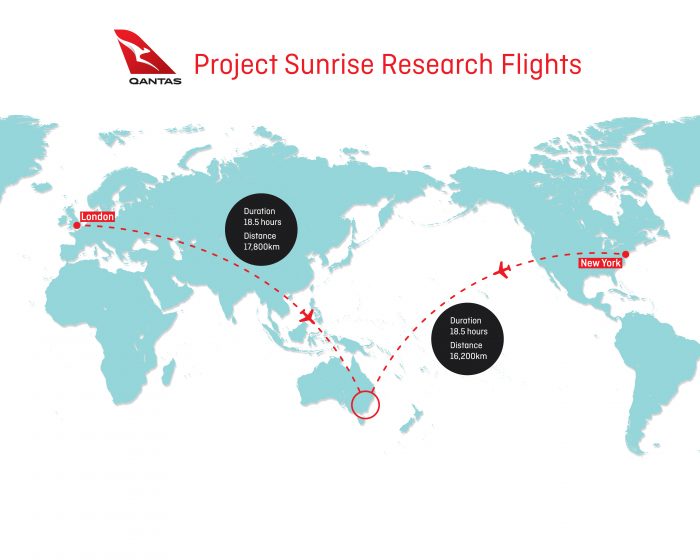Imagine being able to fly from New York or London to Sydney, Australia, without stopping.
The world’s longest flight: 19 hours
Qantas Airways is launching new routes that will let you do just that. These new routes will now be the world’s longest flights.
The airline is planning to research passenger and crew wellbeing on these ultra-long-haul journeys. They’re keen to find out how we’re able to handle such a long time in the air.
The research will take place on three of the long-haul journeys. The results will form part of the planning for Qantas’ Project Sunrise. The goal? To operate regular, non-stop commercial flights from New York and London to Australia’s east coast cities of Brisbane, Sydney, and Melbourne.
Over the next three months, three flights will use the new Boeing 787-9s for their 19-hour journeys. The aircraft will simulate two Project Sunrise routes. One from London to Sydney and the other from New York to Sydney.
This is the world’s first flight by a commercial airline direct from New York to Australia. It’s also only the second time a commercial airline has flown directly from London to Sydney. Qantas once flew non-stop from London to Sydney in 1989. The flight marked the entry into service of the Boeing 747-400.
RECOMMENDED: How An Indie Beauty Cognoscenti Looks Great After A Long Haul Flight

The inflight wellbeing research was designed in partnership with Sydney University’s Charles Perkins Centre and Monash University. It’s being conducted in conjunction with the Alertness Cooperative Research Centre.
RECOMMENDED: Airline Water: Where To Find The Best Water To Drink InFlight
How will Qantas measure wellbeing inflight?
Travelers in the cabin—mostly Qantas Airways employees—will be fitted with wearable technology devices. Each person will take part in specific experiences at varying stages of the 19-hour flight.
Scientists and medical experts from the Charles Perkins Centre will monitor sleep patterns, food, and drink consumption. They will also assess the lighting, physical movement, and inflight entertainment to determine their impacts on health, wellbeing, and the body clock.
Monash University researchers will work with pilots to record crew melatonin levels before, during, and after the flights. Pilots will wear an EEG (electroencephalogram) device that tracks brain wave patterns and monitors alertness.
The aim is to collect enough data to assist in building optimal work and rest patterns for pilots operating extended haul services. Qantas will share findings on crew wellbeing with the Civil Aviation Safety Authority to help improve conditions during ultra-long-haul flights.
Qantas has already conducted data on passenger sleep strategies on its non-stop Perth–London flight. The airline will further analyze some of these initial findings as part of these dedicated research flights. Customer feedback on food choices, stretching and wellbeing zones, and entertainment options are also part of the study.
Could you handle a 19-hour flight? Let us know in the comments below!
